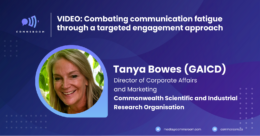There are many disciplines that contribute to organisational resilience which include governance, risk, compliance, business continuity, security, emergency and crisis management but whatever the nature of a business disruption is that tests an organisation’s resilience, there will always be the common factor of people being affected. Whether it is staff who are expected to respond and restore the business to business as usual, or stakeholders who do not receive the service they are paying for or the general public who are in the building that may be impacted by the flow on effects of the disruption.
In order for an organisation to survive disruption, it must ensure that their people can survive the disruption first and foremost because without the people there is no organisation. The organisation must then ensure that they have a culture of resilience that permeates through all their policies, processes, procedures to support their people.
Resilience is often mistaken simply as the ability to bounce back, but it is actually so much more. There are two key themes that are not immediately evident from the usual resilience definitions. The first is that resilience is not just reactive, but crucially is also proactive, meaning managing risk in advance, learning from the experience of others, and actively preventing disruptions both at personal and organisational levels.
Second, resilience is not just about coming back to where you were before, but instead using each setback as an opportunity to advance towards a larger goal and purpose.
Resilience is an increasingly important skill to have in today’s climate of change. First, it was IQ (Intelligence Quotient), then it became EQ (Emotional Quotient). Now there is increased importance on RQ (The Resilience Quotient).
These skills are increasingly needed by people of all ages and all life stages. As change accelerates, people need the mental skills to thrive despite adversity. It is worth remembering that someone’s resilience capacity is not constant throughout life. We can improve our resilience, and our resilience can be worn down.
Whether it gets worn down due to the environment and external events or through internal negativity, the fact is, no one is invincible. As resilience improves, we gain a natural resistance against being worn down, although a toxic environment will eventually get to us. This is worth keeping in mind as the work environment is where many people spend most of their time, meaning it has a key influence on their resilience.
The benefit is not just to the organisation, but to individuals themselves. Resilience increases their own sense of safety at a subconsciousness level, improving relationships, goal achievement, sense of purpose and overall sense of wellness. This translates into greater compassion and empathy at a societal level, highlighting how an organisation drive for resilience can have a profound global impact. Cultivating resilience, therefore, represents a major long-term opportunity.
By developing your organisation’s resilience culture, there should be:
- A REDUCTION IN ABSENTEEISM AND PRESENTEEISM;
- AN INCREASE IN STAFF RETENTION;
- IMPROVED PRODUCTIVITY AND FLEXIBILITY;
- INCREASED ENGAGEMENT AND WORK SATISFACTION;
- IMPROVED COMMUNICATION, COLLABORATION AND INNOVATION;
- THE DEVELOPMENT OF A SHARED MINDSET.
The question now is, how do you start to develop this resilience culture in your people?
It starts with an assessment of the current level of resilience at the individual and team level which can then be aggregated to the organisational level. This baselining assessment can then be used to inform the development of a tailored program that will develop various aspects of resilience.
One such assessment tool is the Predictive 6 Factor Resilience scale which is a psychometric assessment across six domains including Vision, Composure, Reasoning, Health, Tenacity and Collaboration. The differentiating component of this assessment tool to others is its forward-looking Momentum score which can predict future movement (declining or improving) of resilience levels.
There are many ways that an organisation can then go about improving the resilience levels of their staff whether it is through targeted information campaigns, provision of online tools, the introduction of mental health first aid officers, therapeutic drumming workshops, running of regular simulations/exercises, or conducting formal resilience training classes.
The important thing to remember is that developing resilience is not a once-off process and doesn’t happen overnight. It takes time but it is worth it for when (not if) a big disruption occurs.
This was originally published at Akolade
Post Views: 32
Chief Executive Officer, Phynix Initiative and Former Business Continuity Manager Department of Education and Training





























